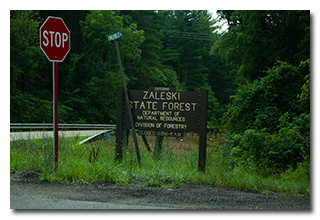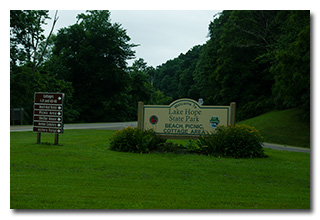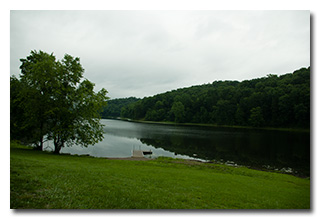
by William Eric McFadden
Support-Your-Parks Summer 2021 RATpedition, Day 1; parks two and three of ten
From the Lake Hope State Park website:
-
Lake Hope State Park offers a truly relaxing, yet rustic getaway from the high speed of modern life. The entire park lies within the Zaleski State Forest in the valley of Big Sandy Run. The park's heavily forested region is marked by steep gorges and narrow ridges with remnants of abandoned mining and iron-producing industries.
The park surrounds the lake and boasts a wooded family campground and a variety of cabins for families and gatherings of all sizes, including the roomy Laurel Lodge. No visit to the park is complete without a stop in the dining lodge for a hearty meal.
From the Zaleski State Forest website:
-
The 27,822-acre Zaleski State Forest is the second largest forest in Ohio's system of state forests.
Zaleski State Forest operates the only state-owned sawmill in Ohio. The mill produces rough sawn lumber for use by Ohio’s state forests and state parks as well as other government agencies.
Historic Moonville Tunnel is located within Zaleski State Forest on the Moonville Rail Trail right-of-way.
Pictures
Description
 For the Parks on the Air program (POTA; link) Support Your Parks Summer 2021 Plaque Event
on the weekend of July 17-18, 2021, one member of the Southeast Ohio Radio Adventure Team
performed an aggressive two-day activation schedule with an overnight stop in Portsmouth, Ohio. The route of Eric McFadden, WD8RIF,
would cover over 300 miles, would include fifteen stops in two states, and would lead to twenty-one successful POTA activations with
421 QSOs made. Over the weekend, Eric would encounter rain, thunderstorms, and brilliant sunshine.
For the Parks on the Air program (POTA; link) Support Your Parks Summer 2021 Plaque Event
on the weekend of July 17-18, 2021, one member of the Southeast Ohio Radio Adventure Team
performed an aggressive two-day activation schedule with an overnight stop in Portsmouth, Ohio. The route of Eric McFadden, WD8RIF,
would cover over 300 miles, would include fifteen stops in two states, and would lead to twenty-one successful POTA activations with
421 QSOs made. Over the weekend, Eric would encounter rain, thunderstorms, and brilliant sunshine.
Following a successful activation at Waterloo Wildlife Area (K-8633) (link), Eric's second stop of the day was Keeton Cemetery in Lake Hope State Park for a two-fer activation of Lake Hope State Park (K-1968) and Zaleski State Forest (K-5455).
 Eric arrived at Keeton Cemetery in Lake Hope State Park at about 1315 UTC. During a light drizzle, Eric quickly set up his
28½' wire vertical on his Jackite 31' telescoping fiberglass mast and drive-on mount. Because of the threat of rains
and thunderstorms, and because of his aggressive time schedule, Eric set up his KX3 inside his car. Eric was on the air at 1322 UTC.
Eric arrived at Keeton Cemetery in Lake Hope State Park at about 1315 UTC. During a light drizzle, Eric quickly set up his
28½' wire vertical on his Jackite 31' telescoping fiberglass mast and drive-on mount. Because of the threat of rains
and thunderstorms, and because of his aggressive time schedule, Eric set up his KX3 inside his car. Eric was on the air at 1322 UTC.
The cell-signal at this location allowed Eric to use the POTA Spots website (link) to spot himself and to look for possible park-to-park (P2P) QSOs.
Eric began operations by finding a frequency to run on 40m and by 1356 UTC he had completed twenty-five QSOs. This run included a P2P QSO with ND9M who was activating Greenbrier State Park (K-1575) in Maryland and a P2P QSO with KG4MTN who was activating Wallace State Park (K-1793) in Missouri.
 Checking POTA Spots for additional P2P QSO opportunities, Eric made a P2P QSO on 20m with WD5GRW who was activating
Boggy Depot National Historical Site (K-8143) in Oklahoma.
Checking POTA Spots for additional P2P QSO opportunities, Eric made a P2P QSO on 20m with WD5GRW who was activating
Boggy Depot National Historical Site (K-8143) in Oklahoma.
Because his aggressive itinerary didn't allow for much time at any of the parks, Eric tore down his station in order to proceed to his next location.
In all, Eric made twenty-six QSOs, including three P2P QSOs. All of Eric's QSOs were CW and were made at the 5-watt level.
Eric also submitted his log to the World Wide Flora and Fauna in Amateur Radio (WWFF; link) program for Lake Hope State Park, KFF-1968.
(return)